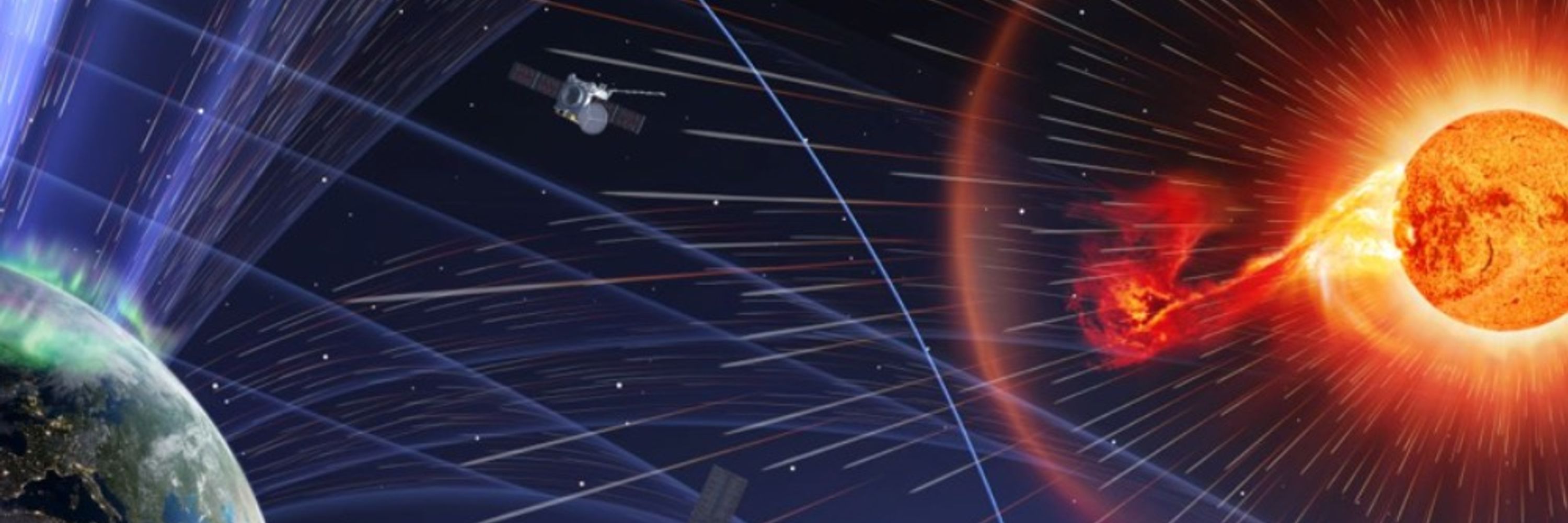
Christian Möstl
@chrisoutofspace.bsky.social
Heliophysicist | Head, Austrian Space Weather Office @aswogeosphere.bsky.social | GeoSphere Austria https://geosphere.at/en/topics/disaster-protection/space-weather |☀️💥💨🌍 | erc.europa.eu HELIO4CAST | http://helioforecast.space | he / him
Finally, Petra van Lommel taught us how to do space weather communication to the public without scientific terms - use the terms light / rain / wind!
Aurora chaser MaryBeth Kiczenski (photos) provided perspectives for us researchers and forecasters to improve tools to make chases more fun!
(3/3)
Aurora chaser MaryBeth Kiczenski (photos) provided perspectives for us researchers and forecasters to improve tools to make chases more fun!
(3/3)



October 31, 2025 at 8:07 AM
Finally, Petra van Lommel taught us how to do space weather communication to the public without scientific terms - use the terms light / rain / wind!
Aurora chaser MaryBeth Kiczenski (photos) provided perspectives for us researchers and forecasters to improve tools to make chases more fun!
(3/3)
Aurora chaser MaryBeth Kiczenski (photos) provided perspectives for us researchers and forecasters to improve tools to make chases more fun!
(3/3)
Then a discussion with @esa.int and NOAA on future data streams for #spaceweather, with sub-L1 measurements on distant retrograde orbits (ESA HENON and ESA SHIELD) attracting lots of attention. An ESA L3 mission concept may use Faraday rotation to remotely detect #solarstorm magnetic fields. (2/3)




October 31, 2025 at 8:04 AM
Then a discussion with @esa.int and NOAA on future data streams for #spaceweather, with sub-L1 measurements on distant retrograde orbits (ESA HENON and ESA SHIELD) attracting lots of attention. An ESA L3 mission concept may use Faraday rotation to remotely detect #solarstorm magnetic fields. (2/3)
ARCANE with its ability to also detect high speed solar wind streams was also shown during the live #spaceweather forecast!
Further, fascinating talks on geomagnetically induced currents in Sweden, Germany and New Zealand, and discussions on ESA space weather plans for the next few years. (2/2)
Further, fascinating talks on geomagnetically induced currents in Sweden, Germany and New Zealand, and discussions on ESA space weather plans for the next few years. (2/2)




October 29, 2025 at 1:10 PM
ARCANE with its ability to also detect high speed solar wind streams was also shown during the live #spaceweather forecast!
Further, fascinating talks on geomagnetically induced currents in Sweden, Germany and New Zealand, and discussions on ESA space weather plans for the next few years. (2/2)
Further, fascinating talks on geomagnetically induced currents in Sweden, Germany and New Zealand, and discussions on ESA space weather plans for the next few years. (2/2)
Maria Federica Marcucci on the @esa.int M7 mission candidate "Plasma observatory", which would be an amazing mission to understand in high detail how the solar wind works on small scales and how it interacts with the 🌍 magnetosphere.

September 10, 2025 at 8:48 AM
Maria Federica Marcucci on the @esa.int M7 mission candidate "Plasma observatory", which would be an amazing mission to understand in high detail how the solar wind works on small scales and how it interacts with the 🌍 magnetosphere.
Full article:
archive.ph/2025.09.01-0...
archive.ph/2025.09.01-0...
archive.ph
September 3, 2025 at 12:44 PM
Full article:
archive.ph/2025.09.01-0...
archive.ph/2025.09.01-0...
Sure, but I would not worry about any of those systems crossing that threshold. Its just weird that the whole thing is framed as a „race towards AGI“ while we in the end we get a lot of useful tools but nothing near those promises.
August 19, 2025 at 11:49 AM
Sure, but I would not worry about any of those systems crossing that threshold. Its just weird that the whole thing is framed as a „race towards AGI“ while we in the end we get a lot of useful tools but nothing near those promises.
Of course this is meant with regards to large language models (LLMs). Deep learning (DL) is e.g. highly useful for things line automatic detection of structures, as pattern recognition was for long time a particular strength of humans, and DL is catching up and surpassing humans for large datasets.
August 19, 2025 at 11:32 AM
Of course this is meant with regards to large language models (LLMs). Deep learning (DL) is e.g. highly useful for things line automatic detection of structures, as pattern recognition was for long time a particular strength of humans, and DL is catching up and surpassing humans for large datasets.
iopscience.iop.org/article/10.1... (unfortunately, paywalled)

Radware Bot Manager Captcha
To ensure we keep this website safe, please can you confirm you are a human by ticking the box below.
iopscience.iop.org
June 6, 2025 at 2:22 PM
iopscience.iop.org/article/10.1... (unfortunately, paywalled)
I am not involved in this! Nils Janitzek gave an introduction yesterday in the Solar Orbiter working groups meeting.
June 6, 2025 at 1:07 PM
I am not involved in this! Nils Janitzek gave an introduction yesterday in the Solar Orbiter working groups meeting.

